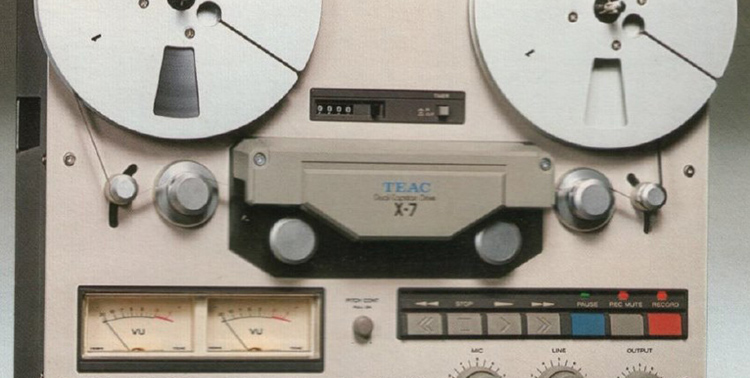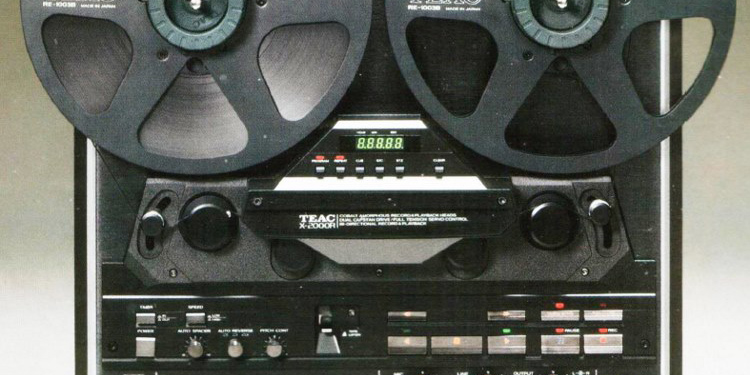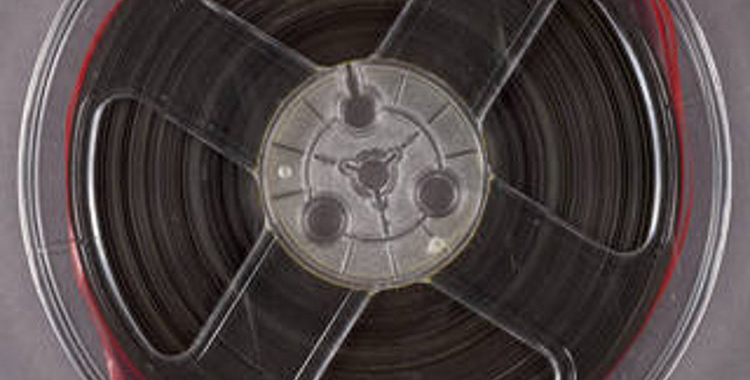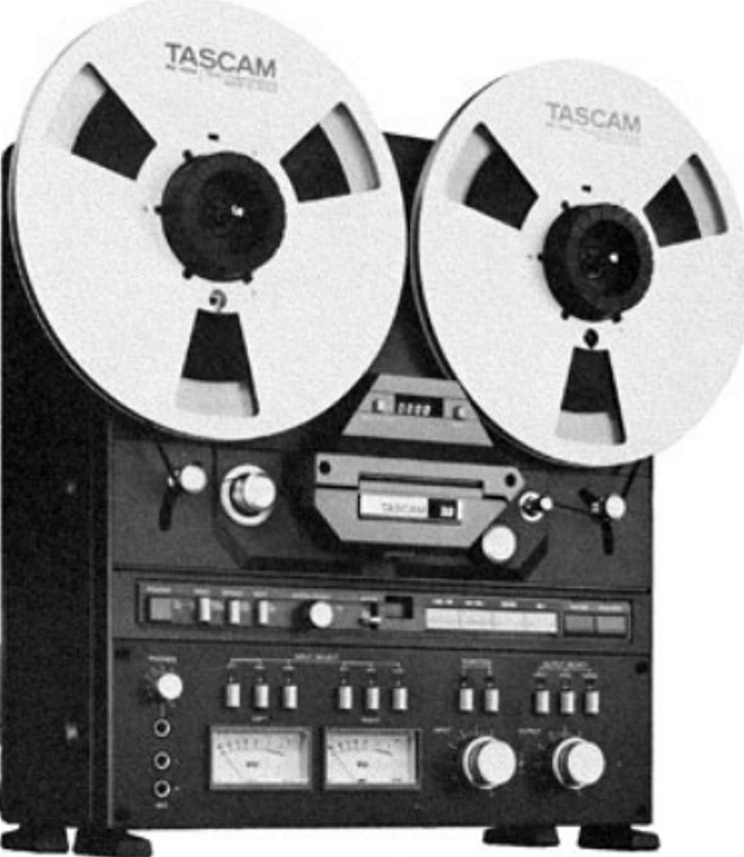Mel Martin’s recent article about tape decks is excellent.
This comes from decades of using these decks. Based on my experience, I have listed the model numbers of desirable units in later sections. But, first, a word of caution. Given the age of these decks, I guarantee nothing. Only a small percentage of the available population of tape decks made my cut.
These units are 25 to 40 years old with lots of moving parts. Of all vintage audio purchases this is the one most likely to disappoint. Many music lovers did off the air taping, especially live broadcasts and some made copies for friends. I have seen tape decks run to the ground in under 10 years: impossible to service anymore. Now we are 40 years out so normal use over that time may also have used the consumer grade machine.
Storage in a humid, unheated attic, can also do significant damage. Although extensive service may bring a unit back, the cost of service might exceed its value. Parts rust under these conditions, including the critical tape heads.
For most people tape decks were interesting toys that did not get much use. A winning find on eBay is a single user unit stored in a friendly environment. This situation occurred when the tape deck left the equipment shelf to make room for a CD-R recorder. Contact the seller for the unit’s provenance. Sometimes an eBay description will identify if it is being sold by the original user, including how it was stored. That is less common as time goes on. Do not purchase without the ability to return the unit if found defective.
Making your eBay purchase from a qualified service person, such as the one Mel Martin suggests, is highly recommended for a happy experience. Like a 40 year old car, you want the tape deck inspected before you purchase. One step below this is an eBay offer with a You Tube video showing that the unit operates in all modes. A You Tube video will also have audio so you can listen for speed stability issues. Better You Tube videos will put the unit into record mode.
Only a few technicians specialize in fixing tape recorders. If you do not know what you are doing you can bend or snap off an unreplaceable part. The good news is that service manuals for everything are now on the web: no guessing about how to take things apart and how the unit works.
Mechanical adjustments for alignment and tension of the pinch roller, reel tables and break bands takes pages of a service manual which will thankfully be in the technician’s hands. Thank you World Wide Web.
These mechanical adjustments need special tools which only a reel tape specialist would have. A little rust can seize the adjustment screws. The technician needs to know how to free them without damage. Many parts must be removed to get inside these units and these parts can seize up after a stay in the attic.
Your unit will need a tape head alignment and likely EQ adjustments. In total there are about 14-24 internal pots and 3-5 alignment points per tape head. In good units the high and low speed EQs are adjusted with different pots.
We should see double the internal pots and alignment points for units with record auto reverse units, but most units, have only a few added pots limiting reverse performance. Do expect to pay much more for service and adjustment of tape deck with record auto reverse. Head alignment time, the most difficult part, is still doubled. Another reason to skip these.
If the head alignment is wrong, the highs will roll off and a phase error between left and right will occur.
In addition to a scope, signal generators and measurement systems the technician needs alignment tapes which do not come cheap.
Test tones, from the professional alignment tape, at different frequencies, are needed to set the internal playback EQ pots and to align the heads.
Once the playback head alignment is correct the record and erase heads are set to match the playback head. Record EQ and bias are adjusted to match the previously optimized playback EQ.
Bring a sample of the tape you will be using if you plan to record. Record adjustments are tape sensitive. The new tapes are different from the 40 year old tapes.
You know if the listing says “it lights up but I had no tape to test it” runaway. Purchase nothing without a 30 day return.
Pass up barn finds with massive restoration to bring it back to life. The tape decks I am recommending are common.
Some on eBay are claiming to refurbish the machines but they appear to have no training or bench test equipment. A bright red light should flash if massive electrolytic capacitor replacements have been made. “Upgraded” opamps or any other parts in the item description translates to move to the next eBay listing.
Changing opamps may result in high frequency oscillations with all the reactive components in a tape decks signal path. Some replacement opamps may not be able to drive the tape heads and create distortion. Without bench test equipment these pseudo-techs have no idea they are making things worse.
Only if a power supply rail has hum or the wrong voltage should it be investigated for cap replacement. You need a oscilloscope. Bypass caps in the analog path need replacements only if the voltages across the cap are not per the service manual. The ultimate test is with a distortion analyzer. Your technician should have one. Distortion could come from other components and not just capacitors. Training and equipment will guide a technician to a specific part that is defective if one exits at all.
Secrets Sponsor
Well stored tape deck electronics should not need repair just adjustment. Front panel pots and switches should be cleaned.
The service manuals call out minimal oil and grease applications. Special mechanical measurement tools are called out in the service manual to check for problems with mechanical linkages. Another red light is any eBay listing highlighting aggressive cleaning and use of lubricants. Service manuals do not show motor internals in almost all cases. Motors should not be opened except by the most expert when a replacement motor is need but cannot be found. Claims that motors have been taken apart for greasing and DC brush cleaning tells you to move to the next eBay listening.
For too many reasons to list here you must only purchase a tape machine with three motors and solenoid control of the pinch roller, tape lifters and reel breaks. You also want logic control to the motors and solenoids. This will enhance reliability by sequencing the activation of the mechanics. Units with logic control have touch sensitive tape motion controls. Tape motion buttons that need to be pushed in are a sure sign the deck does not have logic control. The photo from a Teac brochure shows a three-motor deck with logic control
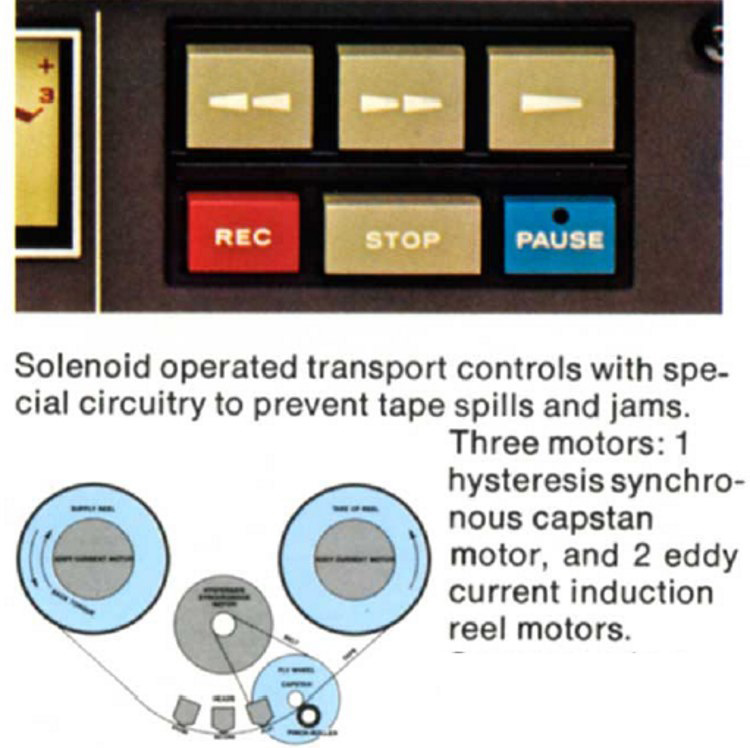
All Teac units have three motors. Many Akai’s have three motors. A number of other brands produced these decks (Pioneer and Technics to name two) but few people would have any experience servicing them and parts would not exist. Sony’s are mostly single motor units designed to low price points when new.
Tandberg, which produced a few three-motor decks, have terrible repair records. Revox, which are all three motors, is not discussed below because I do not know enough about them. Revox is a division of Studer which, with Ampex, produced the finest professional tape recorders. I have direct experience with most of the units that I recommend below.
Of interest, the technician that Mel Martin uses is not selling anything but three-motor units, with logic control, on eBay.
Unless you need to play 10.5 inch reels, I recommend a seven-inch deck which will have tape tension optimized for seven-inch reels. The seven-inch units that I recommend are almost identical to the 10.5 inch units produced at the same time. A few 10.5 inch units have a switch to change tape tension for seven-inch reels. 10.5 inch units tend to cost more on eBay. 10.5 inch units weigh much more and are much larger, which makes them harder to ship safely, if the original box is missing, and harder to place on your equipment rack. Note that seven-inch tape will overhang outside a 10.5 inch deck.
Giving up on auto reverse enhances reliability significantly and costs less on eBay. Time for the technician to perform quality control and align everything is reduced by half. Decks with auto-reverse on playback have worse performance in reverse. The tape is running backwards, starting at the pinch roller, before the heads. Recall that the music will stop before the end of side one so if you hit reverse at that point you will be in the middle of music on side two. Decks with record reverse, in general, have worse performance than the equivalent unit without this function.
Akai has the advantage of Glass and Ferrite (GX) heads which wear down much more slowly.
Akai also had the advantage of a direct drive capstan motor so you do not have to worry about belts. But the downside is that the electronics associated with a 1976 – 1979 Akai direct drive is the servo control can become intermittently erratic, with speed variations. These decks may need a modification. Finding a technician with significant Akai repair experience is more difficult than for Teac. I use Akai seven-inch decks at home.
Most Akai decks with GX heads, logic control and three motors are from the late 70s – early 80s. For seven-inch units, without record auto reverse, the GX-255D is the unit to get since it was the last production run (1980-81). The only other seven-inch recommendation is the earlier (1976 – 1977) GX-270D but get the GX-255D if possible.
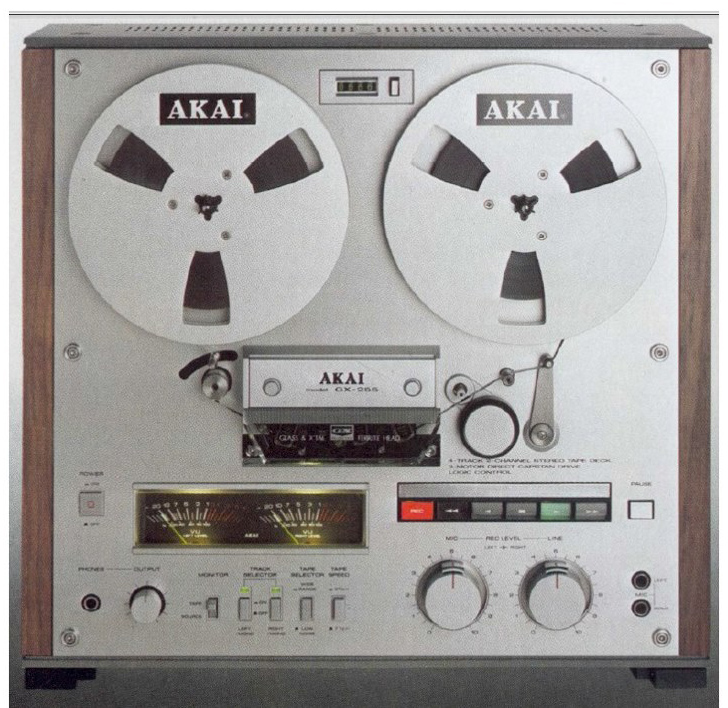
For 10.5 inch the GX-630D and GX-630DB (1976 – 1979) can be recommended. The DB units have Dolby B which you may find on rare pre-recorded tapes.
The later GX-620D and GX-625D are a better targets given the later 1980 – 1982 production run. Given the longer production run these may be easier to find in good condition than the seven-inch GX-255D. Again I would target these early 80’s units over the older Akai’s although you may pay a little more. To be discussed in the next section, Teac goes in the other direction. The prime decks are from the 70’s with a recovery in the late 80’s, when Teac moved to all professional and changed the name to Tascam.
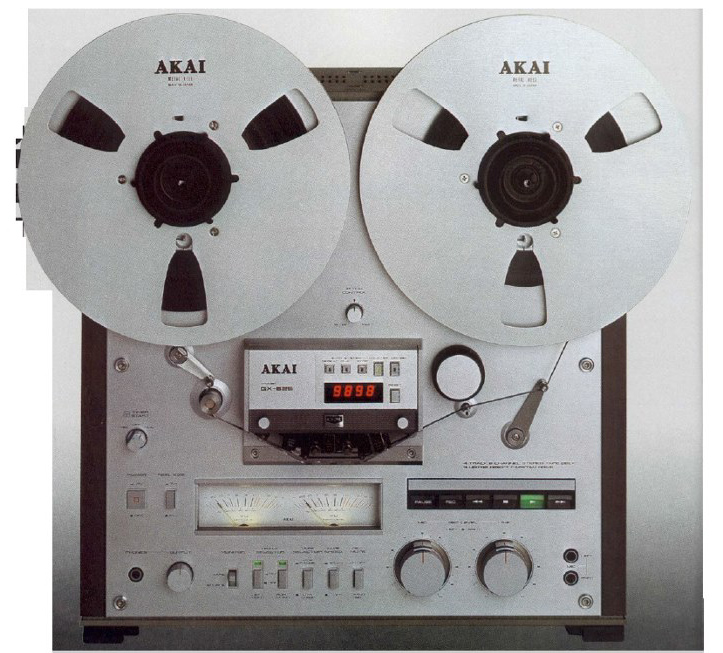
The GX-625 has a rare and very helpful real time counter. It also has a fast wind to counter zero. That is not very useful and can stretch the tape despite some complex circuitry that attempts to prevent it.
The last Akai units are all 10.5 inch auto reverse on record. These will not approach the performance of the GX-620 or GX-625 which have better heads and motors. The models numbers are GX-635D/DB, GX-636 and GX-646. The GX-747 is the last unit with production ending in 1985. These units tend to be pricy on eBay and finding a technician who knows these exotic units and who can obtain parts specific to them, may be hard.
I do not see anybody on eBay offering serviced and guaranteed Akai’s on eBay now. You have to cross your fingers on one that at least has a return policy. My go-to Akai repair guy has retired but at least one other is still active. I see a surprising number of first owners who put the units in storage in the house. I can understand why they held on to a GX-255, GX620 or GX625.
The Teac downside, relative to Akai, is the soft tape heads. These heads quickly develop a groove degrading performance. Professional tape heads are similar to the Teac tape heads. In true professional recorders, soft heads are used. Whatever performance advantage they have in the huge and expensive professional machines does not show up in the consumer class decks.
Metal heads can be “lapped” when the tape cuts a groove in the head. This is not a cheap process. It is shown in the URL.
Forget about finding NOS Teac head replacements. Third-party heads are available for expensive professional machines. Heads do not last long for a unit that puts in a full work week. No such demand for consumer heads. The critical Teac belts to the capstan do appear to be available.
Units from Teac built from 1974 – 1979, for seven-inch playback, include the A-2300SX, A-2300SR (less desirable with playback reverse), A-2300D (Dolby B), and the up-market A-4300.
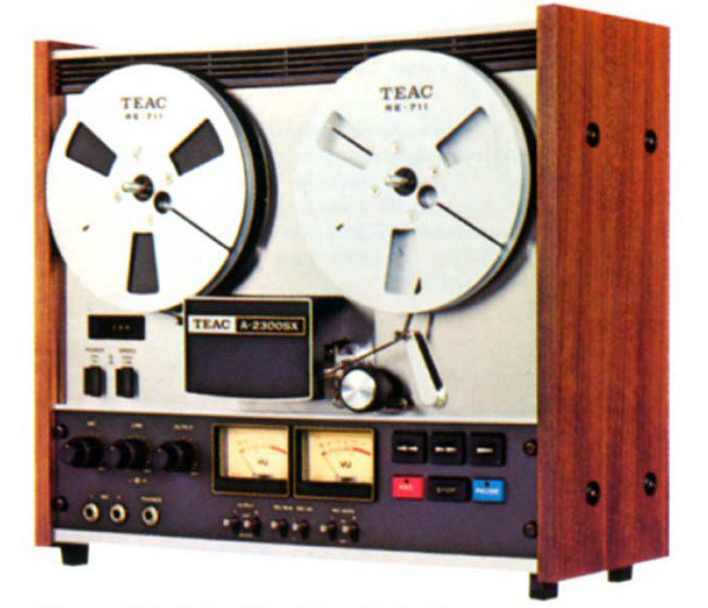
The 10.5 inch units are the A-3300SX, A-6300, and A-7300. Avoid the earlier A-2300 and A-3300.
The golden find is the A-7300. It is a Teac design unit that was sold as an Ampex ATR 700 unit, moved at consumer tape speeds, and had one-quarter track tape heads. This particular unit did not have a long production run and with the Ampex co-design some parts differ from typical Teac including a direct drive capstan. You need a technician who has experience servicing these units.
A serviced A-7300 is the unit that Mel Martin picked up for $600, with warranty. You will need a lot of luck to replicate that price with good quality tape heads.
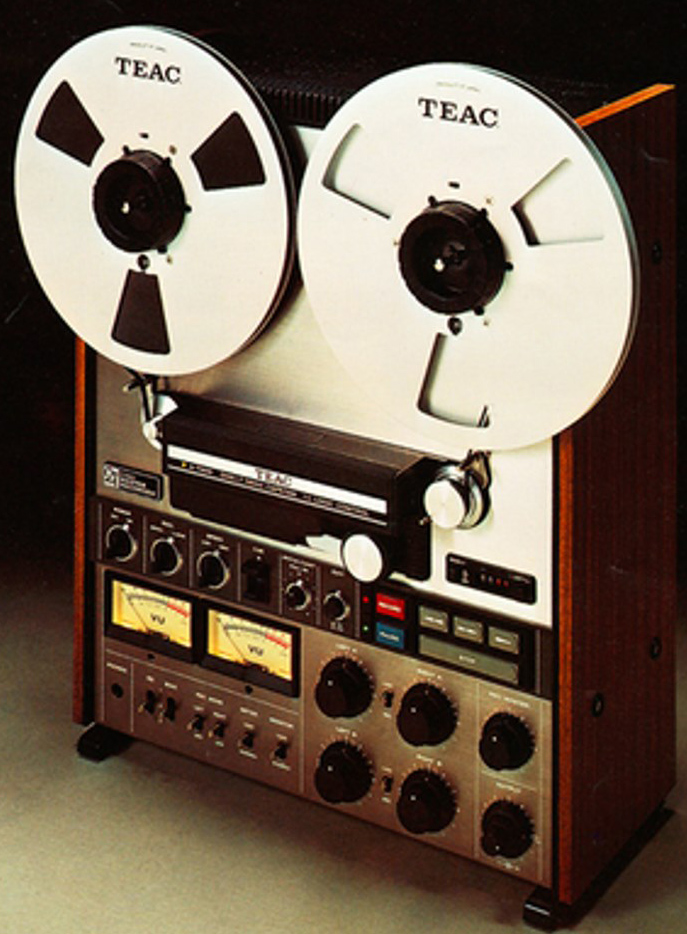
Moving to Teac in the 80’s, you should avoid the X3, X3R, X300 and X300R which do not have solid state logic control. These were built cheaply, priced for Radio Shack (rebranded as the TR-3000). Cutting price to the bone was the last gasp effort to keep consumer reel decks selling. X300s production ran to 1990 when Teac gave up on consumer open reel.
The reel motors are small in comparison to any other Teac. eBay shows many parts for these units, available for sale. These parts come from broken decks that have been disassembled and taken apart. Given the length of the production run you would expect to see lots of them on eBay but I do not.
The seven-inch Teac with logic control, and robust reel motors from the 80’s, are the X7, X7R (1979 -1983) and X700R (1984-1986). All three models have the 7 inch reels overhanging the sides and top as shown below. None of the 7 inch tape decks shown above did that. This will present problems getting at the reels in the equipment rack. I know of no other 7 inch decks with side overhang.
The almost identical 10.5 inch units are the X10 and X10R (1979 -1983).
A Teac X10R is shown in Mel’s article.
The R indicates auto reverse record. Prior to these units, Teac avoided reverse for good reasons. In the 80’s, easy to use cassettes, forced designers to try to simplify the reel tape user’s experience. Unfortunately all 80’s Teacs are basically the same design with some tape heads and relays removed from units without auto reverse.
On the R models the capstan belt has to move back and forth on the two fly wheels since one has to rotate a little faster than the other, depending on direction, to maintain the tape tension: ugly design. Units without reverse have different parts designed that keep the belt in one place for forward only operation. But units without the R retain the complex two capstan design.
You will never see a pro unit with two capstans. Two capstan designs are more sensitive to belt quality and belt replacement is difficult given the disassembly required to access the belt. If Teac did the forward only design from scratch it would need only one capstan. The head assembly size would be reduced by half with the blank space for the three missing heads cut out. This improves head block stability. This is exactly what they did in the next gen professional only designs called the Tascam 35-2B (1981) and Tascam 32 (see below).
The X700R, X1000R (see below) and X2000R have DBX noise reduction. The level of noise reduction is impressive but unlike the Dolby professional units, you can hear the unit working. In addition DBX doubles frequency response errors unlike any version of Dolby. DBX is also in some late auto-reversing Akai’s
DBX made it into semi-professional machines but this feature disappeared 25 years ago. If you record with DBX forget about playing the tape on any other machine. Assuming your DBX deck will last forever is not a good tape preservation strategy. As far as I know no digital processing block (called a plug in, in professional land) exists for reversing DBX. Professional activist’s likely developed something.
The Teac 10.5 inch units from 1982 to 1990 are models X1000, X1000R, X2000 and X2000R. A good supply of these units exists today, given the long and late production dates.
These units were designed to convince reel tape users to purchase a final machine. Everything but the kitchen sink was included, including DBX noise reduction.
These units have servo controlled tape tension and electronic motor breaking system. In play mode the servo keeps tape tension constant as the left reel unloads and the tape moves to the take up reel. With the servo these will fast forward, at very high speed, to tape counter zero without stretching the tape. It is extremely impressive to watch, but this capability added a whole layer of additional complexity and reliability issues.
X-2000/R exclusives included a new material in the tape heads and a discrete, complimentary, playback head amplifier. The playback electronics look like no other consumer unit. The recording electronics, not so much.
I could not resist all of the technology and I purchased an X-2000R, new, at a deep discount, as it was being closed out. Mine has proven problematic. A skilled repair technician never resolved an intermittent power supply issue. Discussions about the reliability of the X-1000R and X-2000R are available through a Google search. And there are some good You Tube videos showing issues. Keep in mind that some issues are specific to one model only.
My X-2000R purchase was intended to replace my Akai seven-inch decks. In the end the Akai’s are still in the equipment rack. Simple tape decks have fewer features to go wrong and they are easier to service. Compared to the simple 70’s Teac tape deck units, simple Akai units production runs ended in 1982 making it more likely that you are getting an Akai unit from the first owner.
Secrets Sponsor
My X-2000R is in a safe place, unplugged. One day I will ship the 50 pound “thing” to another service center but the motivation has yet to hit me.
Mel got an X-1000R from his eBay source that repairs and aligns the units. It appears that Mel found a good one!
Most people purchasing used equipment are backing up old tapes they converted to digital. The tape recorder they have now may have worn out parts and plays badly so they search eBay in the hopes of getting something with lower mileage. This gives them a better sound transfer to the hard drive.
Mel Martin is correct about the stability of old tape. The transfer thus becomes time critical. Some degraded tapes with sticky – shed syndrome can be saved. The internet provides advice but some advice can do more harm, than good.
If you have sticky tape do not attempt to play it. Servo controlled capstan motors will burn out trying to move it at the correct speed. If your tape deck has DC reel motors those will also burn in fast forward or rewind as the tape slows to a crawl with stick tapes.
Some tape gets sticky on the back side. A special coating to improve fast wind packing uniformity was added to the back. It was not tested for long term reliability. This is some of the most expensive mastering tape in the 70s and early 80s with these back side issues. Sticky back coating can cause damage to a deck just like a sticky oxide on the front of the tape in fast wind.
If the tape is extremely important seek out a professional transfer for sticky tape. Shedding oxide also needs professional transfer.
I follow what the Library of Congress does and copy to a hard drive using a high resolution USB ADC. Below I examine what to do if you want to copy a tape to another reel tape deck. Unless you do the transfer double speed a digital copy will be better. Yes, this requires 15IPS (Inches Per Second) for 7.5IPS tapes, which translates to a semi-pro machine. See below for more on these. Cheap pre-recorded tapes are the exception; these are so sub-optimal you can copy at the same speed. More on pre-recorded tapes below.
A small percentage of very well endowed people are doing something else. 99.4% of LPs were mastered off of reel tape, or a digital copy of reel tape. Most people have never heard a studio master tape using studio quality equipment. The difference between the LP and original master is dramatic. LP’s were the only way to create cheap copies of the master for the consumer. They are stamped out in seconds, using cheap plastic.
Those that did have a chance to hear an original master, in the pre high res digital era, went back to the system they had at home shattered. Some argue that even the high resolution copy does not bring the out of this world (OTW) experience of the analog master.
Now you can experience close to master tape sound, but for a price. $300 – $600 for 30 minutes to an hour. I am not kidding. For this price you will get a 15IPS, half-track, and master tape copy at one-to-one speed. These are fair prices. Tape is expensive and these are produced one per hour. The cost includes labor and the cost of running the decks, which is like renting an expensive car. Mastering quality blank tape, alone, costs $75- $130 for 30 minutes. Two tapes are required for a whole album. This is why LPs had to come into existence. Tape just cost too much to use as a consumer format.
Look at prices for four small labels at Elusive Disc.
Many more labels sell master copies at similar prices. For some reason these firms like to sell direct instead of with Elusive Disc. Other well-known sellers of audiophile LPs have not moved to reel tape yet. A blog post below provides a large list of labels.
My most interesting find was a copy of the Reference Recording master of Malcom Arnold overtures. You can own this for $450 when it comes back in stock. Note this comes with two reels of tape for the hour recording.

Warning – many of these are EU sourced and recorded using the EU playback curve not the US NAB. I saw a couple that were Dolby A encoded (the expensive professional version), true master tape studio copies.
If you have the funds to afford a collection of these tapes you do not need my article. You get the last Tascam reel recorder at several thousand dollars, which is a small fraction of the cost of a twenty-tape collection.
Instead of $600 you can spend $20. The quality of the experience will roughly follow that price ratio. I would describe the sound of reel tape as better than cassettes. The tape moves at 4X speed, is twice as wide and is at least twice as thick (more oxide depth). However, these recordings have no noise reduction and they use the same production as cassettes to make them affordable.
On the other side the Master moves twice as fast (15 Inches per Second) and each channel is again twice as wide (1/8th inch). That reduced speed and 4 track format increased the playing time of pre-recorded consumer tapes by a factor of four but significantly increased hiss and distortion.
Consumer pre-recorded open reel and cassettes used the cheapest tape imaginable. Cheap tape limits dynamic range. The maximum level of magnetization before distortion is limited. At high frequencies, the ability to magnetize is further reduced. At the same time tape noise increases. On top of that these are copied at 10X, or more, the tape playback speed. 20kHz becomes 200kHz and effectively gets lost. Running at this speed also creates low end issues called tape head bumps.
The tape from which copies were made was about fourth generation from the master. The tape being used for the copy is run hundreds of times at these high speeds. This source copy needs to be replaced after a few hundred runs. So, in summary, the tapes used as source tapes in producing final product, are themselves copies of the master.
When new I often got the reel tape version rather than the LP. Inner groove distortion on LPs drove me crazy, as did acoustic feedback, surface noise, clicks and pops.
As Mel Martin points out, bass performance on these tapes far exceeds LP. The lower the frequency the larger the groove on an LP. The cutting engineer was told to back off. The companies did not want returns from people playing the LP on typical consumer, not audiophile equipment.
Everything is mono below 100Hz on an LP. For stereo information the cutting stylus moves up and down. Impressive stereo bass would drill through the lacquer.
Once the CD arrived, it was over for me with cheap pre-recorded tape. The CD was so much closer to the master tape than these cheaply produced items. I am not taking a stand on CD vs. master tape here. It is the limitation of the copy process. Red barn paint of oxide copied at 10X – 20X from a tape that was four generations from the master has significant limitation, with tape hiss on the top of the list.
Unfortunately we have a significant problem with used reel tape that you will not experience with used cassettes. Unlike a cassette, with the tape safe in its plastic housing, reel tape is exposed.
If not stored with great care, the tape is ruined. LPs do much better in a basement or attic without any humidity or temperature control. They can be cleaned. Poor storage conditions may cause the binder to lift from the oxide or the oxide may become sticky. Mold will do similar things.
Some of this is happening in master tape vaults now, even though the vaults were designed to safely store these tapes. Tape degradation is why 50% of LP reissues come from earlier digital copies of the tapes.
Tapes must be stored vertically. If a stack are stored horizontally the tape reel will start to warp contacting the tape and crinkling the edges. This is especially true of the cheap boxes pre-recorded tapes came in. The Figure below shows how not to store a tape.

The figure below shows a tape with waviness and curl from improper storage

If the tape was re-wound on a cheap deck the tape will not be on a flat plane. Some edges will almost be in contact with the reel without warpage. In the figure below you can see edge damage at spokes.
A damaged open reel will make a cassette sound good.
Tape heads must be demagnetized often or the tape will degrade. Most consumers did not do that, resulting in further damage.
Given all of the issues required for the tape to be in good condition eBay may not be the place to go, but prices are cheap. A site called Discogs lists 1100 used tapes from independent sellers but some say that these are custom copies of LPs. The sellers grade the offering. I assume the site has a large number of customers. The customers know when they “get taken”, and the sellers’ ratings will hit the floor. The average price is $25 – $50 but can increase to five times that for popular material.
Mel Martin mentioned a source that does not post inventory to the web.
Do not laugh at the $600 price of a true master tape copy. It is a fair price. That companies in the 60’s could come up with a method to sell consumer pre-recorded tape for $15, when new, is amazing, but it came at a big sonic cost.
I have no idea why you would want to record now, except for the desire to transfer old recording on degrading media, while staying in the analog domain. No product discussed in this article, save the Tascam professional units discussed below, has the performance to be used in a live session.
New tape is not cheap. Prices on Amazon are about $35 for 1 and 1.5 mil tapes on seven-inch reels and $70 on 10.5 inch reels. The best performing oxide formulations run $130 in 1.5 mils only on 10.5 inch reels. The high prices are from inflation, low volume, and discontinuation of lower grade consumer quality blank tape, sold at Radio Shack.
At 7.5 IPS (Inches Per Second), a seven-inch reel runs 30 minutes with 1.5 mil tape in one direction and 45 minutes at 1 mil tape. Double that for 10.5 inch reels. At 15 IPS you half the run time and with two-track you can record in one direction, only.
You can save money on 10.5 inch tape if you purchase one with plastic reels but I could not find this on Amazon for currently produced tape. A selection of tapes and reels from the company RMG is shown below. They offer plastic 10.5 inch reels but it looks like you need something outside Amazon to get them. The two-inch multi-track reel is several hundred dollars.
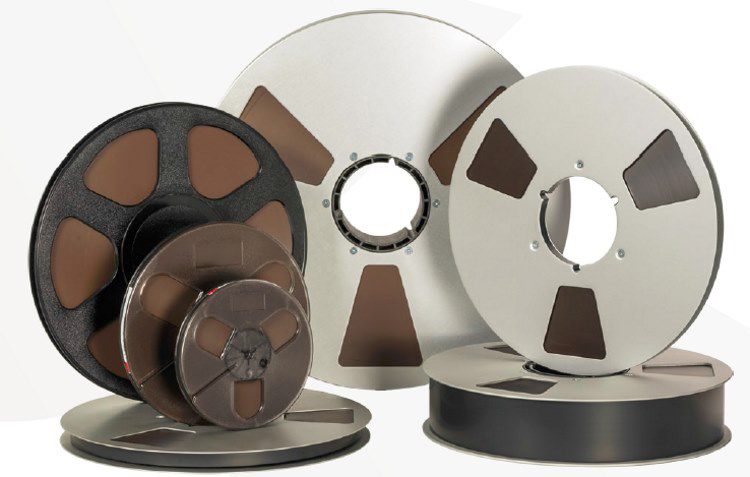
Quantegy, which was the old Ampex facility, is bankrupt, but two other companies have filled the gap. RMG is located in France. The tape is based on what was produced by the defunct divisions of the European companies AGFA and BASF. They have a number of formulations.
The second company is ATR Magnetics which is USA based. It, too, has multiple formulations. Both offer the standard tape thickness of 1 mill and 1.5 mills.
These are all new formulations so you need to reset the record bias and equalization. For consumer decks that requires a technician to adjust the internal controls.

ATR does not sell plastic 10.5 inch reels, only the pancake which has no reels at all. You can move the tape to your own plastic reel.
If you want to stay analog to copy your important old material with a second open reel deck, you may want to consider a 15 IPS, two-track deck for the second deck. This will insure that the copy will not accumulate more noise and distortion in the re-recording process. Semi-professional recorders see an eBay premium. Now that you know the price of new blank tape you will understand how expensive a single 15IPS two-track recording is to create.
In the 60’s consumers wanted machines that used less tape and had longer recording time so four-track at 7.5IPS or 3.25IPS became the standard. The trade was low SNR (Signal to Noise Ratio), added distortion, flutter, and significant roll off at the top end at 0dB.
You compound all the issues in consumer-to-consumer deck copying. Akai went out of business as the flaws of consumer reel-to-reel became all too obvious. The best cassette decks with Dolby C were close enough for almost all consumers units by the 80’s.
The Teac A-7300 2T, X1000M and X2000M, mentioned previously, have two track heads and 15IPS speed option allowing playback of studio tapes that are not Dolby A encoded (most tapes used in a studio environment are Dolby A or Dolby SA). All of these have a fourth playback head for four-track tapes. These will not play three and three quarter IPS tapes. Being semi-professional they do not reverse.
Teac’s name changed to Tascam when the company moved to pure professional product. The Tascam 32 is by far the best find being produced after 1989. The 32 and the earlier Tascam 35-2B (1981 – 1988) are the true successors to the Teac A-7300 2T. Note that the dual capstan of the X1000/X2000 is removed. That was for auto-reverse.
The eBay price for a restored Tascam 32 is not going to be cheap. Unfortunately, the 32 has no fourth head for four-track playback. These are likely well-used at a studio or radio station, unlike some home units that were eye candy on the equipment rack. Re-lapping or replacement of the heads will be mandatory.
The Tascam BR-20 follows the 32 and is the last of the Reel-to-Reel line from Tascam. Production ended in 2004. Restored versions of the BR-20 are going to be really pricey and, again, no four-track playback. A photo of the BR-20 is included in Mel’s article.
The BR-20 is what is showing up at Hi Fi shows but as Mel points out the stock analog electronics would be at home in a $400 integrated amp. Modification of playback electronics in the unit might help but the tape heads output wires really need to come out of the unit. The head output would go direct to an external tape preamp like professional Ampex units of the past. Not as easy as it sounds given the low signal levels and grounding issues. Touching the record side electronics, for reasons I cannot go into here, is asking for big trouble even if the stock looks primitive.
It is surprising it has taken so long for audiophiles to discover reel to reel tape. It is the only recording device a studio used until digital came along. Ask any producer or recording engineer and they will tell you an LP came into existence only because consumer pre-recorded tapes were too expensive and reel tape decks were too hard to use.
With a restart in interest in reel tape you can purchase a copy of a limited number of masters. Unfortunately it will cost over $500 for just on LP equivalent. Perhaps those that can afford 7 figure systems in custom rooms will find that amount to be a round-off error. This article has discussed where to go to get the hardware and new pre-recorded tapes if you have the bank account.
Regardless of how expensive your turntable, cartridge and preamp are, you will never come close to the master tape from which the LP was cut. Those attending Hi Fi shows now are finding this out for themselves as these $500 tapes are being played in the best sounding rooms. Still this is not the sound of the master tape. It is second or third generation without Dolby noise reduction. It is still only the professionals that get to hear the magic of the master.
It is most likely a music lover, who made many reel to reel recording in the 50’s – 80’s, that is in search of a replacement reel to reel deck. The music lover wants to transfer the tapes to a hard drive. Most of these are FM air checks. Often at the edge of Hi Fi but many new compositions have never been recorded or the performances of well known works are, to our music lover, definitive.
Sometimes our music lover’s tape deck has reached the point that replacement is the only practical option. Perhaps our music lover got rid of tape deck a long time ago. With hard drives so cheap they now want to start the transcription process and need to find a good used one.
Music lovers and audiophiles may also have pre-recorded open reel tapes. We have discussed the up and down sides of these in this article. Again, a replacement tape deck may be needed to enjoy these again.
I hope this article will help in finding a good used recorder at an affordable price. The first key is to look for machines with good reliability and serviceability. I have provided those above. The second key is to get a unit in good condition and get it to an experienced service professional.
For those who want the archives to be analog we have looked at supplies of blank tape. We have also looked at used semi-professional tape recorders that would be required to achieve a transparent transfer of a high quality original recording.
A few of you may want to start collecting used open reel tape as you now collect used LP’s. I hope this article will help you find a good tape deck on which to play them. I also hope it is clear that finding a good, used pre-recorded tape is more difficult then an LP. The LP withstands poor storage far better.
Still I encourage you to experience the world of reel tape. You can get a good 7 inch reel tape machine for less than the cost of a good moving coil cartridge. Give used pre-recorded reel tape a try instead of doing that cartridge upgrade.
Addendum from David A. Rich:
This is information I found after this article was published.
1) If you want to see what it is like to refurbish a reel-to-reel deck correctly you can go here.
Search on “Reel To Reel Tape Decks” and you will see links to restoration of some of the decks discussed in the article. Some units came in much worse shape than others did. You will see photos of the test equipment and test tapes. Multiple photos show different aspects of the repair, cleaning and alignment process. This is not a repair site as far as I can tell.
1a) As strange as it sounds, this site, as well as some other posts on the Internet, claim the transistors in the audio path of the Akai decks (2SC458) have a long term reliability problems. A contaminant is making its way to the silicon surface lowering current gain and increasing noise. That is why accelerated aging tests are done during device testing but these tests may not find every issue for a 40 year old transistor stored in a humid, high temperature, environment. This can happen to even modern ICs if the accelerated aging tests do not uncover everything but techniques have improved significantly in 40 years. Much has been learned from military / industrial qualification testing.
2) Those of you who want to hear what a commercial released open reel tape sounds like, without going to the expense of purchasing the used deck, and the used label issued tape can try this site.
High Definition Tape Transfers produces high-resolution digital transfers of used, commercially released tape. New listings go onto the site as they find additional usable samples.
They have claimed these do not infringe on copyright in the past (Wayback Machine) but this link is not on the site now.
3) Do not confuse the Tascam 32 shown at the end of the article with the Teac – Tascam 32-2. The Teac –Tascam 32-2 is a much older, cheaply built, deck. The Teac – Tascam 32.2 is just a Teac X10 with ½ track heads.
The Tascam division must have forgotten they used the name on an entry level, semi-pro Teac a decade before.



